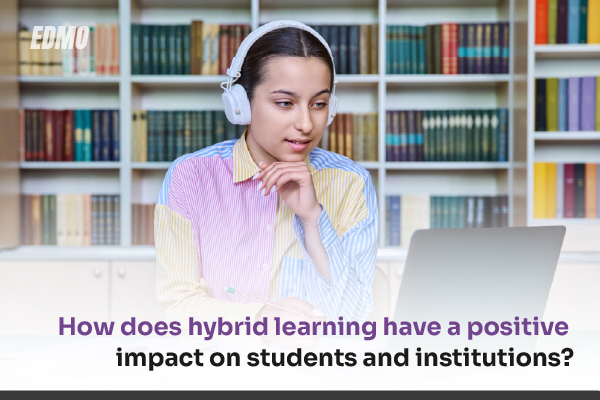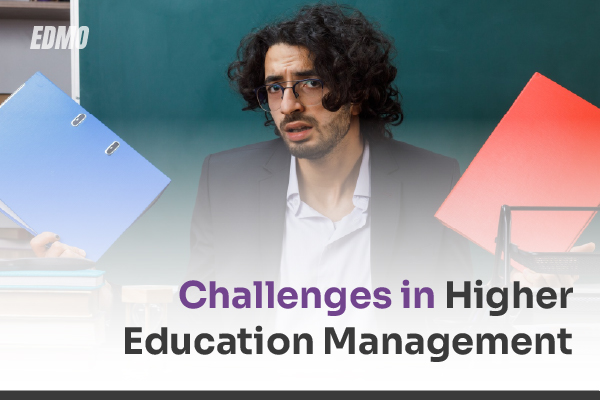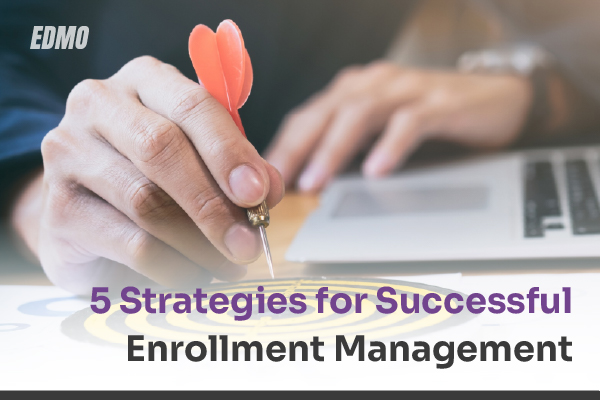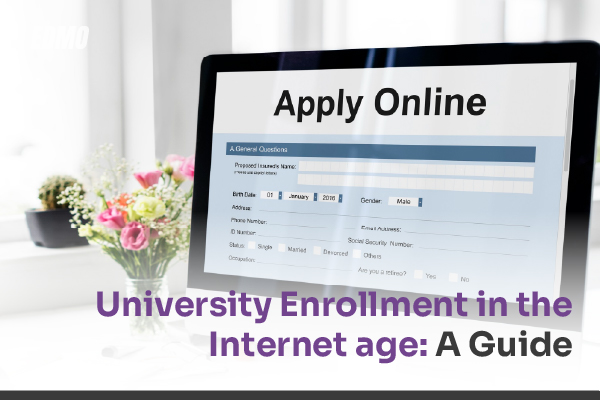With institutions worldwide now fully reopened, the education sector is still navigating the aftermath of the pandemic. The disruption in education accelerated the adoption of innovative technology, particularly in ed-tech. As a result, Hybrid Learning has become the new norm, transforming classrooms globally by providing an integrated, flexible learning experience that caters to the evolving needs of students and institutions alike. Let’s see how.
What is Hybrid Learning?

Do you remember how, years ago, education was confined to a classroom? Students used to sit on desks, write notes down, discuss their issues with peers, etc.
Hybrid or blended learning, a model that combines both in-person and online learning, has been around for a decade but gained significant attention and traction in the last few years, especially after the disruptions caused by the COVID-19 pandemic.
Hybrid learning is a model which allows students to spend some time in the classroom, and sometimes learn from home or anywhere else. When they’re not in the classroom, students can sign on to the virtual arena of education remotely, mostly using video conferencing software.
It can also be a case wherein professors (or instructors) are taking a class both offline and online simultaneously, i.e. a group of students sitting in a classroom with the instructor, and another group could be consuming a lecture and interacting with the students and instructors – via a video conference call. Cool, isn’t it?
Hybrid Learning vs. Blended Learning
Hybrid Learning is not to be confused with blended learning, HyFlex, and online learning. Blended learning is mostly used interchangeably with hybrid learning, however, there is a subtle yet key difference between the two.
Hybrid Learning focuses on finding a flexible ratio of online and offline, even if it is different for each student. It is more focused on the student than on the convenience of the instructors. It focuses on optimizing the experience for the students.
Blended learning, on the other hand, seeks to balance online and offline instruction. So, essentially, blended learning uses online resources to complement classroom instruction, whereas hybrid learning uses online resources to combine with classroom instruction.

How does it work?

Well, long story short, the recent advances in cloud technology have made online learning and interactive sessions more viable than ever. High-speed internet and the willingness to embrace modern methods, from institutions and organizations alike, have made these forms of learning much more feasible.
How does it help?
The core aim of Hybrid Learning is to retain engagement and foster interaction, so as to ensure it feels lifelike and even seamless.
- Hands-on experience through virtual simulations and exercises fosters interactivity and builds a sense of confidence and familiarity amongst the students.
- This solution is also scalable, which means a college or a company can increase or decrease the number of servers or infrastructure they have deployed for a certain use case.
- User limit can go as high as you’d want as there’s no upper limit to how many attendees there can be, given ample strength to the infrastructure deployed.
- Another big thing that happens due to hybrid learning is that the online classroom environments are web-based, and hence are accessible from anywhere. All you need is a good internet connection.
- Hybrid learning also helps with cost-efficiency as a virtual solution is cheaper to build and maintain than a whole campus infrastructure. As travel becomes less essential, remote work, or remote classrooms will soon be the norm rather than a special case.
- It also brings a very personalized touch to the learning curriculum. Since learners can just join in from anywhere, and learn at a pace comfortable to them, it increases retention of the subject matter amongst the students.
- Also, when participating in a range of activities, students can align their learning styles with the curriculum and effectively understand things better. Gamification of the entire learning experience makes it more productive for both the instructors and the instructed.
Is Hybrid Learning going to stay?
The short answer is – YES. It is important for students to learn where they can interact with their peers and learn more than just the curriculum. However, it is also equally important to ensure that the learning experience is more personalized and less rigid.
There are very clear indications of the benefits of in-person instruction – such as interactivity, doubt-solving, or just more focus. But it also means that students have to travel to a certain place at a certain time to attend certain lectures. And given the pandemic, the motto has shifted from “get them all under one roof” to “the show must go on.”
Education, when imparted via a hybrid model, has far more chances of being useful and valuable than the traditional model. Course designs and lesson plans would be available right from the start, and students could choose to place themselves at their convenience.
Challenges

The important thing to note here is that hybrid learning is still new. Most people without a reliable internet connection can miss out on crucial things. This digital divide needs to be bridged in order to make this facility available to everyone. The curriculum will also need a redesign. Instructors will need to structure their plans to make them more purposeful and focused.
Instructors, therefore, need to pack more in less. They could very quickly switch to becoming mentors/guides due to the vast wealth of information available on the internet. Students can always learn things in a different way than expected by the administration.
Teaching methodologies need to be adapted to be more inclusive and interactive. Motivation can also be a big factor to take care of in self-paced hybrid learning models.
Parting words
Remember, hybrid doesn’t mean fully virtual. The virtual component is to ensure continuity and interactivity amongst the teachers and students. It is also very important to weigh the pros and cons of hybrid learning for your specific type of instruction before jumping on the bandwagon.
One can teach software or sales over a call, but not baking or guitar or mechanical experiments. So educators should mix and match until they find their groove with a perfect learning model.
If you have any doubts about hybrid learning or need help with setting up a hybrid setup for your institute, please contact us using the link below.

Also read: Demographic Changes in Student Enrollment and What it Means for Your Institution
How to Use AI to Personalize the Admissions Process in 2025
How the Trump Administration’s H1B Policy is Shaping Up – and What it Means for Your University
EDMO’s Conversational Intelligence Overhauls Info Gathering for US Knowledge-Sharing Platform







